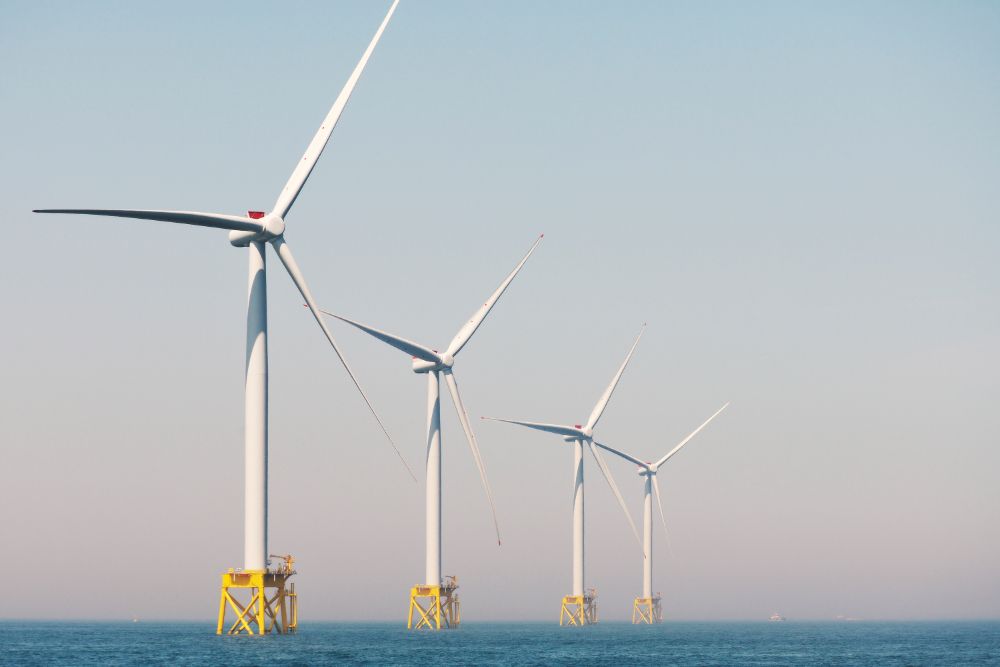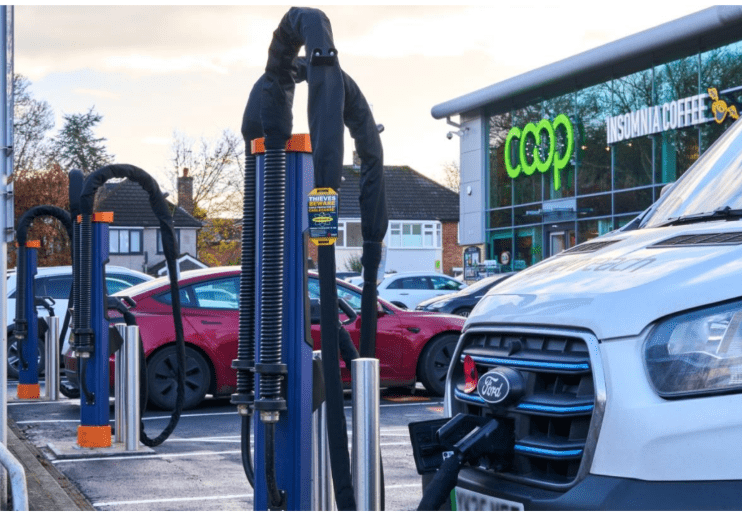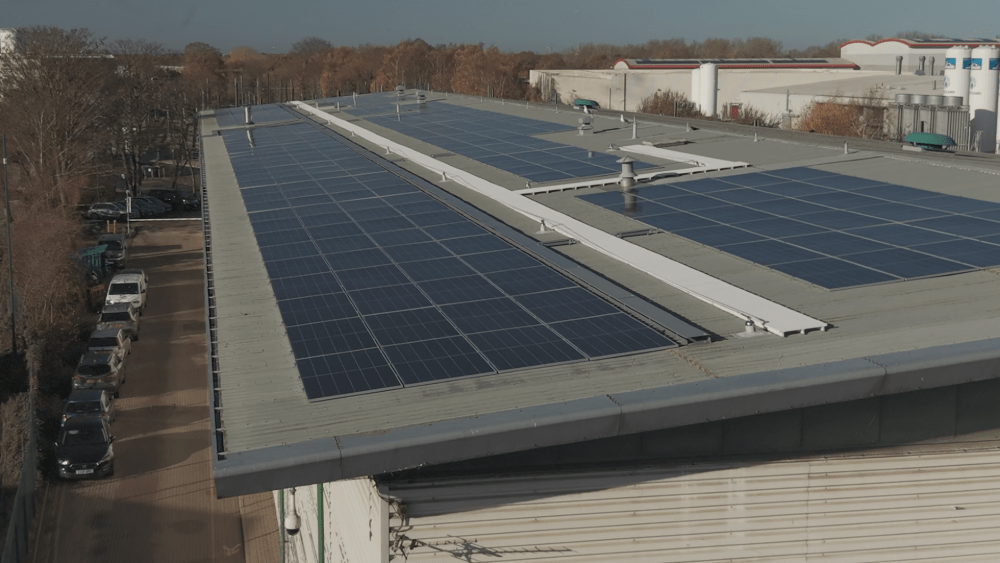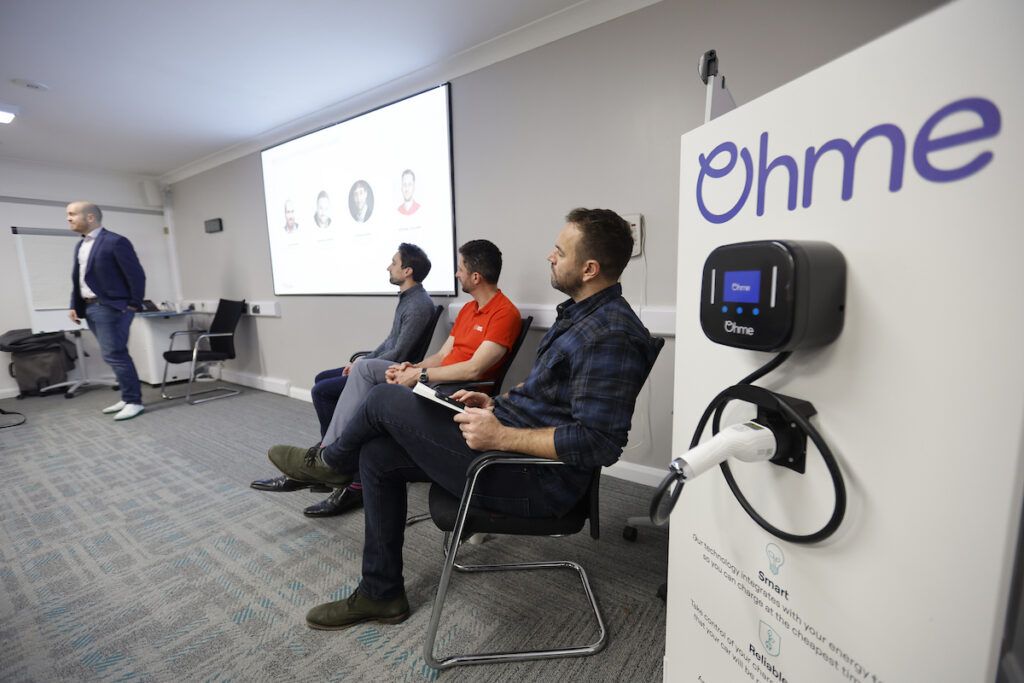Paul Jewell, Systems Development Manager at National Grid Electricity Distribution, provides an update on Take Charge – an innovation project that disrupted the landscape of electric vehicle (EV) charging.
At National Grid, we see ourselves as energy network innovators and disruptors. Our distribution business has an innovation team with a long and successful history of developing new ways to overcome barriers to capacity and connectability – so we were thrilled to win an industry award that recognised the disruptive technology used in our Take Charge electric vehicle charging project.
Over the past two years, we have worked with partners to specify, design, test and trial a brand new pre-constructed and packaged solution to deliver the large scale capacity that charge point providers need at high traffic areas like motorway services, to enable rapid car and van electric vehicle (EV) charging. By combining innovative technology with a tailored design, we have created a solution that is scalable, affordable and, most importantly, suitable for a net zero economy.
However, Take Charge is more than just a connections solution; it’s a symbol of the changing role of distribution network operators (DNOs) and the way in which our network insights can help produce innovative technologies that overcome capacity barriers and ultimately accelerate the pathway to net zero.
The changing role of DNOs in achieving net zero
Take Charge is indicative of a wider change happening in the energy sector as DNOs like National Grid embrace their role at the forefront of the country’s green recovery.
Since joining National Grid Group, we are better placed than ever to fulfil this role, as part of the UK’s largest transmission and distribution business. Ultimately, our responsibility is not just to ensure a safe and reliable electricity supply for our eight million customers but to anticipate their evolving energy needs as the UK decarbonises.
To do this, National Grid must accommodate the increasing number of customers wanting to use the network to charge their EVs in an easy, accessible manner. By 2028, we’re expecting to see up to three million EVs to our distribution network. In preparation for this, we have already helped to connect 77,000 EV chargers across our network and are committed to bolstering this number further over the next five years. We’re also committed to making the connections process easier for domestic customers by pledging a ‘same day’ or ‘next day’ connections response for domestic low carbon technologies like EV chargers.
However, our commitment goes beyond ensuring EV capacity. Our network also needs to be smarter, more agile and ready ahead of need. That’s why we’re continually pushing forward with a range of innovation projects to support the mass adoption of EVs.
We launched our Electric Nation project back in 2015 when EVs were relatively new, helping us to understand the habits of domestic EV users. More recently, Electric Nation delivered a vehicle-to-grid (V2G) charging trial, allowing EV owners to charge at off-peak times and sell their energy back into the grid or use it in their own home, reducing both their energy bills and their carbon footprint. Take Charge, our latest EV charging project, takes a modular approach to providing the capacity needed for multiple rapid chargers, hopefully ensuring that EV drivers can access a rapid charger wherever and whenever they need it.
The bumps in the road for EV charging
It’s often said that consumers who choose low carbon technologies are making a sustainable choice but may lose out in terms of cost and/ or convenience. EVs are no exception. A survey by the RAC shows that the number of drivers uncertain about their timeline for going electric increased from 36% to 42% year on year.[1] This may be down to the upfront cost of EVs but also relates to uncertainties about the EV charging infrastructure with 51% of respondents concerned about the reliability of the public charging network.[2]
Rapid charging at motorway service stations will be key to helping drivers make the seamless transition to EVs without worrying about the length of their journey – sometimes known as ‘range anxiety’ – or about the time it takes to charge their EV.
This recognition of the importance of rapid charging has led to the emergence of Project Rapid and the government’s aim for all motorway service stations to have at least six rapid EV chargers on site within the next three years. However, the huge capacity required at service stations for simultaneous charging at peak times can be the same as supplying the electricity for a small town. This often requires unwieldy, expensive infrastructure including a 33/11kV substation and associated switch room. The premise of Take Charge is to remove the need for this large scale infrastructure by providing sufficient electrical capacity for rapid chargers but in a much smaller space – the size of just two shipping containers!
The innovative technology behind Take Charge
We have created a standardised, pre-constructed and pre-packaged ‘one size fits all’ solution that will provide 12,000kW capacity to enable rapid EV charging at service stations. This space saving design ensures that disruption for drivers and operators is kept to a minimum while the project’s ‘plug and play’ components allow it to quickly and easily deliver capacity for 80 rapid chargers per site.
Despite the ground-breaking technology, Take Charge does not result in significant additional costs but, in fact, offers savings of around £0.5 million for each site. Using this calculation, it would deliver over £30 million of savings if rolled out to 75% of existing service stations.
Collaboration is vital for the EV revolution
Collaboration continues to be a defining feature of Take Charge. National Grid has invested £1 million in conjunction with the motorway services provider Moto, to design, test and trial this new technology.
Because motorway service stations will need rapid EV charging on a mass scale, it is vital that service providers like Moto are on board and understand and believe in the solution. Brush Transformers also played a crucial role in the project by engineering and designing the switchgear and transformer components at their Loughborough factory.
Since the successful trial in Exeter, National Grid is sharing the learnings with other DNOs to offer the technology as a UK wide solution. However, we are not stopping there and are actively engaging with other sectors including port and airport operators to see how the technology could be mobilised to meet their capacity requirements and decarbonising these ‘hard to abate’ sectors.
Across our business, we are continuing to evolve and respond to customers’ energy requirements as they reduce their own carbon footprint. This requires understanding the barriers to net zero, including EV charging infrastructure, and recognising the role that networks like ours can play in overcoming these. Through innovative technological design and collaboration, Take Charge is a symbol of how National Grid can help to provide the solutions that customers need to ‘take charge’ of their own net zero ambitions.
References:
[1] RAC Report on Motoring, 2022
[2] RAC Report on Motoring, 2022








